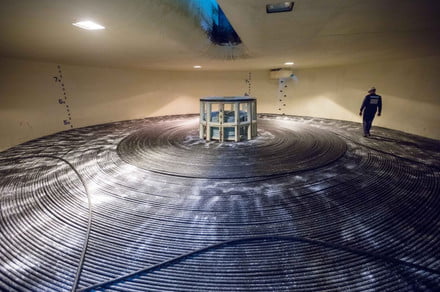Microsoft and Facebook’s transatlantic undersea cable, known as Marea, just broke another record. The long undersea cable, which was completed in September 2017 as a joint project between the two technology giants, is capable of data transfer speeds up to 20 percent faster than what was previously thought possible. Marea already holds the record for the highest capacity undersea cable with a theoretical total capacity of 160 terabits per second (Tbps).
But a team of researchers from Infinera was able to add yet another world record to Marea’s claim. By using and modulating lasers, the researchers were able to record even faster data transfer speeds than what was previously thought possible. “A new experiment has achieved a record fiber optic cable capacity of 26.2 terabits per second across more than 6,000 kilometers of the Marea transatlantic fiber optic cable,” the Optical Fiber Conference and Exhibition announced in a press release.
The new record will be beneficial to those who build or rely on data centers. The cable connects Bilbao, Spain, and Virginia Beach, Virginia, in the U.S., and since the project was finished, the areas around Virginia Beach and nearby North Carolina have become popular locations to build data centers. Still, as The Verge reported, it may be a while before we see the gains achieved by researchers in the real world. Currently, the average transfer speed across the Marea cable is around 9.5 Tbps.
In the past, data transfer speed across an optical fiber is constrained by both fiber capacity and optical reach. Fiber capacity limits how much data can be sent, while optical reach is the distance that the data must travel across. “In simple terms, if you try to push the limits of fiber capacity you will reduce the reach,” Pierre Metz, one of the study’s researchers, said.
Researchers claim that the overall system was operating close to the theoretical maximum transfer rate, or the Shannon Limit, so it may be more difficult to top the new speeds achieved by Infinera researchers. “That means that every gain we make becomes harder and harder,” Mertz said.
Details about the experiment will be showcased at the conference, which begins on March 3 in San Diego, but Metz said that lessons learned from the Infinera experiment are already being used to build next-generation chipsets in a technique called probabilistic constellation shaping (PCS), which will hopefully lead to faster chips in the future.
Editors’ Recommendations
- How to choose an Ethernet cable
- Tight on space? Here’s how to transfer photos from an iPhone to a computer
- Charging via USB-C for laptops: Here’s what you need to know
- Cord-cutting 101: How to quit cable for online streaming video
- Streaming services blast past networks for the most scripted TV shows in 2018

